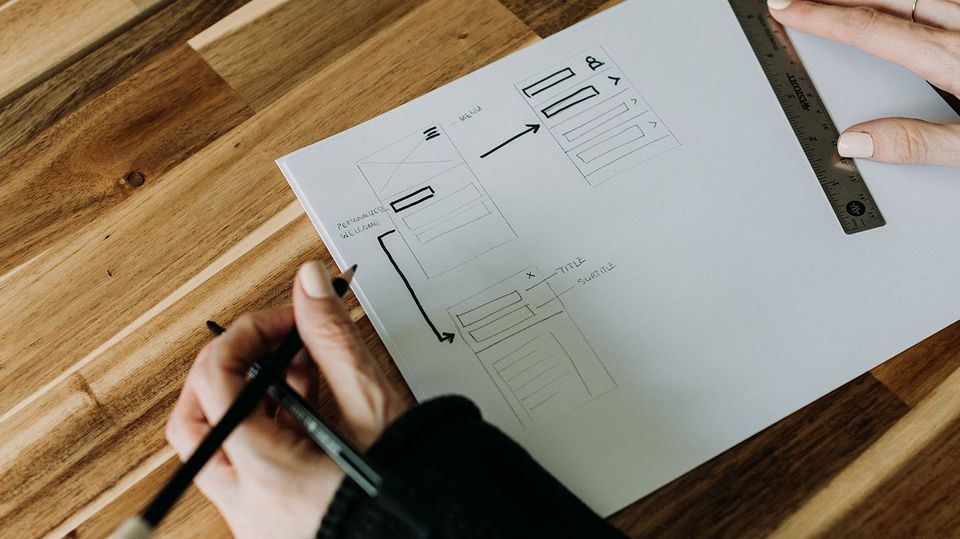A major shift that we all witnessed during the coronavirus crisis is how quickly the world adapted to the changes thrown at it. Digital penetration went to an all-time high experiencing 10 years’ worth the growth in just 3 months. We are all pivoting towards the digital-first economy, and the pandemic intensified the user experience (UX) trends that were already underway. The COVID-19 effects are far from over. One thing we are all sure of is that the pandemic-infused habits are here to stay and have emerged a landscape that is experience-driven.
Digital transformation is no longer a choice but a burning need! Optimized customer experiences (CX) are turning out to be a game-changer, and the UX trends of 2022 are focused on this digital-savvy generation. Businesses have to transform their operations and accommodate the user experience perspectives at every channel and touchpoint to stay ahead of the curve. To help you achieve that, we are here with the latest UX trends that are reshaping the industry, their benefits, and ways to get on this UX wave. So let’s get started…
The Need to Get on the UX Trends Wave
Being a brand is highly challenging in these changing times, but the challenges also come with a silver lining of opening up new business avenues. One of the biggest reasons for businesses to stay informed on the market trends is to stay relevant and rethink transformation if needed. Before we reveal the top UX trends, let’s start with why it is imperative to catch up with these trends.

Why keep up with UX trends in 2022:
-
New user acquisition:
Consumers and customers have begun to change their buying patterns and shift to digital platforms, products, and services—opening up new fronts. For this reason, there are now multiple touchpoints your customers are interacting with. Considering UX as your primary go-to-market strategy allows you to tap into new ways to acquire customers. -
Competitive edge:
Legacy businesses are surviving because they move with the change. Staying informed on the latest UX trends also involves keeping an eye on how your competitors are treating their customers. When you can offer a step-up on what they are already providing, only then can you expect to gain an edge. -
Keep ‘em coming back:
Your loyal customers are your most important assets, and by offering them the experience they deserve, you build a connection that can go beyond a single interaction or purchase.
A whopping 70% of the customers abandon purchases because of bad user experience - this is the price you pay for a non-definitive UX strategy. With that, let’s move on to the segment we are all gathered here for—the top UX trends of 2022 & beyond and ways to get on the wave.
Top UX Trends of 2022 and Ways to Adopt Them
1. Creating Device Agnostic User Experience
Your website’s first user interaction can tell a story; make sure it is worth it!
User experience, in this digital age, is directly proportional to the design aspects of your website and app. Thinking about newly introduced devices and adapting to fit their screen sizes is a challenge that every UX designer faces. But ignoring such an important aspect can lead to a bad user experience followed by churn. Be it mobile devices, smart TVs, laptop screens, or tablets, a fluid experience is expected at each point in time and for each interaction
For example: If your browsing experience is top-notch with excellent page speed and layout visuals, but you lack responsiveness in the checkout or payment page, many will refrain from transacting on your website or app. Your designs should be device agnostic with a consistent user experience across multiple screens and interactions.
This isn’t a new trend but is still relevant in today’s rapidly changing digital landscape. With emerging technologies and new discoveries in designing tools, it is possible to offer a consistent UX across devices with smart layouts and progressive web apps (PWAs). Use tools that let you design multi-device user interfaces (UI) and responsive pages. Also, check for your Google Core Web Vitals score to determine where you stand and the areas of improvement. A critical part here is to test and optimize at regular intervals to maintain a seamless flow of UX.
Some of the UI tools that can help you create device-agnostic designs are:
- Figma
- Sketch
- Adobe XD
- Origami Studio
- Fluid UI
- InVision, and more
If you wish to learn more about these tools and how they can help with different design formats, refer to this Best UI Design Tools guide.
2. Be as Inclusive as Possible - Making Accessibility a Priority
Making accessibility a priority by being as inclusive as possible is the new mantra that smart designers would always apply in their designs. Being inclusive means designing a page or layout that takes diversity into consideration. Brands need to make data-driven decisions to study their geo-targeting, physical and mental disabilities in their target audience, cultural background, age, race, language, and other such aspects before designing their UI. The designs that take the characteristics mentioned here into account can come out as inclusive designs allowing people to interact despite their diversified nature and characteristics.
To make inclusiveness a success:
- Determine users with unique abilities and add features that can ease their usability
- Be ready for unexpected network coverage and add features that work with minimal internet access
- Involve communities in the design thinking process and include the real-time UX challenges
These are a few of the points that can help you design inclusively.
A great example of ‘being accessible’ in action is when Twitter keeps inclusive gender choices with Female, Male, and ‘Add your gender’ options. You could also watch this interactive video published by TechCrunch.
3. Think beyond Customer Base - Build a Community
One of the most influencing UX trends of 2022 is thinking beyond the customer base and focusing on building a community. Building a community means building a loyal consumer base that can help your brand grow with sustainability. Now, if you are thinking about how UX can help here, it’s time you think beyond just design and actually get into the experience.
User experience comprises factors that involve designs + services. It is critical for a business to build a base with loyal customers who keep coming back to you. And when you focus on building rapport outside the sales funnel, you make a community that is loyal to your brand.
Stay true to your brand’s purpose and keep adding value to your customers’ lives. Delighting them with after-sale services, listening to their complaints, and resolving them, including their opinions about your product or service - things like these let you offer a seamless user experience that goes beyond designs.
Here’s how you can start building a community that is loyal to your brand:
- Offer additional value by creating high-quality promotional and educational videos around your products/services.
- Give free resources such as eBooks, checklists, and guides that can help them solve their issues
- Offer personalized recommendations and pricing on your subscription or product bundles
- Request customer feedback and implement it in your design
- Create a loyalty program that incentivizes customers to keep buying from you
- Start a Slack channel or a subdomain forum on your website that’s dedicated to customer engagement and support
Get a better idea of building a brand community by referring to these successful examples explained by Smile.io.
4. Hyper-personalization in a Cookie-less World
The privacy-conscious world refrains from sharing personal details with brands that are not relevant to them. User experience holds tremendous value here, where people are constantly looking for businesses that they can trust. Third-party cookies are dying a slow death, with first Apple and now Google limiting its usage. First and zero-party data is the future, and to attain that, brands must focus on hyper-personalization with superior UX.
About 90% of the respondents in the recent BCG study voted for willingly sharing data when presented with the right value exchange. That is a huge percentage that comes with the challenge of personalizing your customers’ journeys and being relevant at all times. Lazy segmentation and personas won’t do the trick now.
UX plays a big role here in terms of respecting the boundaries, offering relevance, and using the data to give meaningful experiences. Understand personalization for UX in detail with this comprehensive article.
5. Tell a Story, Always - Emotive Designs
With 3D designs, data visualizations, complying to the dark-mode, micro-interactions such as our good old ‘like’ button on Instagram and ‘retweet’ option on Twitter, advanced cursor interactions, and many many more creative design outlooks - the design that can tell a story is the one that impacts the most! In the final segment of our UX trends of 2022, we want to talk about storytelling with designs.
Emotive design is a trend that wins hearts, and when we saw our world going through an upheaval, empathy is the most valuable asset to have. Reflect your care, warmth, and value through designs and be supportive in any way possible.
Use animations, avatars, and elements that are resemblant to human interactions. Give awards, celebrate small milestones, and be there at every step of the way with your designs. This is a trend that shows your value proposition and gives your brands a voice that is mainly human. A great example of creating emotive designs to improve UX is shown below via an image by Mailchimp.

Summarizing UX Trends of 2022
Virtual collaborations, eCommerce, streaming and gaming services, remote work culture, and increased use of communication platforms have all seen rapid growth recently. In times of dramatic change, technology and design trends reflect the customer’s needs. Thus, the future trends will prioritize and try to integrate agility, speed, subtle designs, mobile-first designs, and, most importantly, active use of AI will reflect in various UX design trends.
UX is and will remain a top priority for brands to survive and thrive, and that is the reason improving experience is taking the front seat. The mentioned 5 are the trends we think will make rounds in and beyond 2022. Implementing these UX trends is the decision that can lead your business towards growth driven by the latest in design.
With that, let’s wrap it up with keeping our user experience quotient high, always!





